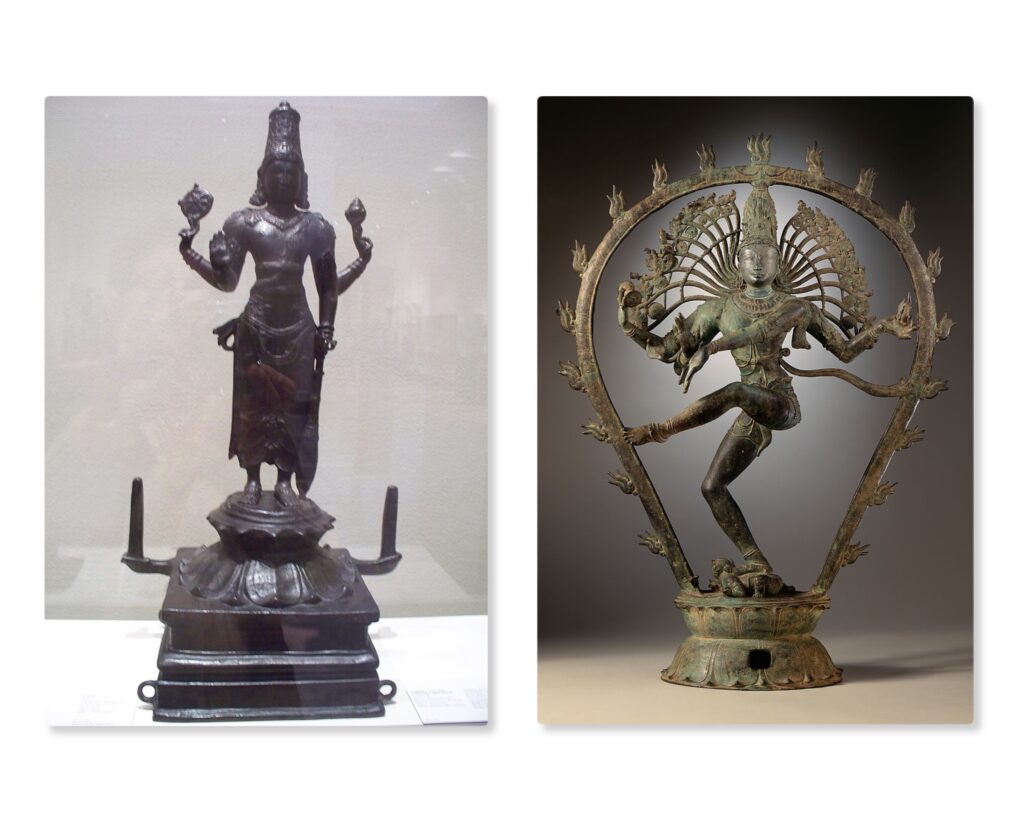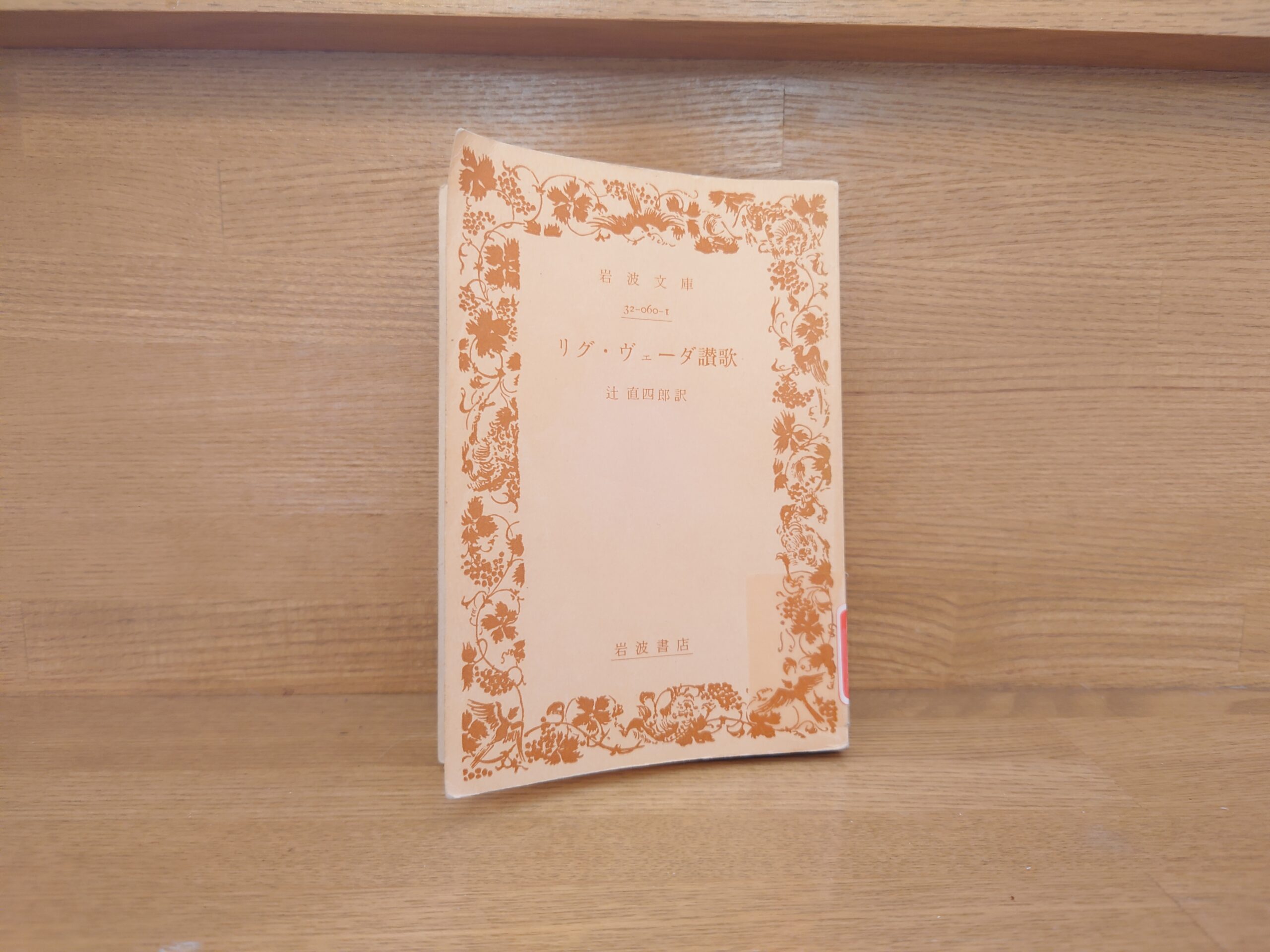Summary and Comments on Naoshiro Tsuji's translation of "Hymns to the Rig Veda" - The Origin of Indian Religion! Praise to the Gods and to capture the mood of the rituals
I would like to introduce "Hymns to the Rig Veda" translated by Naoshiro Tsuji, published by Iwanami Shoten in 1970. I read the 6th printing edition in 1975.
Let's take a quick look at the book.
Of the Vedas, India's oldest religious literature, the Rig Veda, which dates from the 13th century B.C., is particularly ancient and important. It is a collection of hymns in which people prayed to the gods for blessings and blessings for wealth, victory, longevity, and good fortune, and this great cultural legacy of the Aryans is indispensable to a fundamental understanding of Indian thought and culture.
AmazonProducts Page.

The book will be a work of excerpts from key passages of the Rig Veda, the fundamental scriptures of ancient India.
In my last article, I recommended this scriptural reference book, by Naoshiro Tsuji.The Dawn of Indian Civilization: The Vedas and the Upanishads.and now it is time to introduce the main body of the project.
The translator of the Rig Veda, in his "Foreword," says, "This is a very clear explanation of the Rig Veda. This is a very clear explanation, so I will read it carefully, even though it is a bit long.
The oldest religious literature in India is called the Vedas, of which the Rig Veda is the oldest and most important part. Those who are interested in ancient Indian religion, mythology, literature, philosophy, or culture in general, and who wish to trace back the roots of Indian thought, must know something about the Rig Veda. The Rig Veda is the cultural legacy of the Arians, who invaded Punjab in northwestern India around 150 B.C. and gradually expanded their territory toward the east. They conquered the natives by force of arms and were at the same time extremely religious. Although they do not seem to have had anything to be proud of in material terms compared to other ancient civilizations, they developed an extraordinary vitality in terms of spiritual culture. They praised many gods and prayed to them for their bounty and blessings, asking for wealth, victory in war, long life, and good fortune. The Rig Veda is a collection of these hymns. There seems to have been a fierce competition among poets to win the greatest rewards from their patrons, the princes and noblemen, by moving the gods to fulfill their wishes through their excellent hymns, and many works of outstanding literary quality have survived.
Their religion was clearly polytheistic in nature, and the number and range of deities that were the object of their hymns was very large. The components of nature and other things recognized as having mystical powers were deified, whether plants, animals, or instruments, and sometimes even what are usually called abstract concepts (e.g., "covenant," "passion") became objects of worship. Songs that at first glance seem to have no obvious connection with rituals, or that indicate the progress of philosophical speculation, must also have had their place in religious rituals.
However, there is no fixed hierarchy or organization among the deities, and the multitude of deities alternately receive the highest praise. Each deity protects a specific sphere of activity,rule of heavenIn other words, we submit to the laws of reason and truth that maintain the order of the natural and human worlds, and at the same time, we also submit to the laws of this world.rule of heavenAspects of eacha lawThe Arian divinities are adhered to as "the Gods" and are not subject to other encroachments. The major divinities are more or less subject to anthropomorphism and reflect the ideals of the Arians, but often their characteristics fade and strict distinctions become blurred. As a result, the deities are generally powerful and luminous, wise and beneficent, conquering adversaries and demons, lavishing treasure and fame on their followers, punishing the wicked and pardoning the redeemed at the same time.
The hymn is embodied by the human languagerule of heavenIt is the manifestation of the "God of the gods" and is a revelation disclosed to the inspired poet by the grace of the gods. It was the concern of the poets and priests of the time to satisfy the gods with excellent hymns and rituals offering sweet offerings, especially the sacred wine soma, to fulfill the desires of their patrons, to outshine their own competitors, and to receive large rewards. As a result, poetic techniques and ritual regulations progressed at a rapid pace, but as time went on, they lost their literary freshness and became subject to the tyranny of the priests, whose job was to perform complex rituals, giving rise to a tendency toward ritual universalism.
Iwanami Shoten, translated by Naoshiro Tsuji, Hymns to the Rig Veda, p. 3-4
As the title "Rig Veda Hymn" suggests, the scripture repeats the praise of the gods anyway.
And as mentioned in the commentary above, there is just so much variation in its deities. It is also very interesting that the ranking and order of the gods there is ambiguous. A truly polytheistic world is unfolding there.
One of the most interesting points was that Vishnu and Shiva, who later became the main deities in Hinduism, are overshadowed in this "Rig Veda Hymn". It was very interesting to note that Shiva, whose predecessor was named Rudra, was not that popular in ancient India.

Vishnu and Shiva, who were shadowy in this Veda, eventually became immensely popular in Indian religion. This change is likely to be a very important point in understanding Indian religion.
Also by M. J. Dougherty, previously mentioned.Encyclopedia of Indian Mythological Tales.also had the following to say about the "Rig Veda".
Regarding the creation of the universe, the Rig Veda is enigmatic and asks rather than provides definitive answers. It states that the universe began with neither existence (being) nor non-existence (nothingness). There was no realm of emptiness (kukai), no heaven above it, no death, and no immortality. Such cosmology seems to indicate a state of potentiality, a state of chaos from which something might emerge but has not yet appeared. [omitted].
This formless universe is called "the One who is" in the Rig Veda. This point or place or universe-which is itself a meaningless distinction-included everything that ever was or could have been. There was nothing at all but the One, and the One was "breathing without wind by itself. From this action arose a will and an intention (thought), but how this all came about is beyond human knowledge.
The Rig Veda admits that it cannot provide answers. This is because there is no one in the universe who knows the answer at all. Even the devas (gods) appeared after the creation of the universe, so they cannot know how the universe was created. Moreover, the Rig Veda suggests that the Creator, whatever He is, who brought the universe into existence - or perhaps He did not bring it into existence - must know how it came into existence, or He might not even know. It even suggests that the Creator does not know.
This is anything but vague, but not too tricky. The basic concept is this. What happened to cause the universe to emerge is completely beyond human knowledge. It is impossible to know if there was a conscious act of creation of the universe. Since everything exists inside the universe and emerged after the creation of the universe, there is no way to imagine what the state of the universe was like before the creation of the universe, or what the state of the outside of the universe is like.
Hara Shobo, Encyclopedia of Indian Mythology Stories, by Martin J. Dougherty, translated by Hiromi Inoue, P28-31
The Rig Veda does not give answers, but questions, says author Dougherty.
Indeed, reading the Rig Veda only glorifies the gods and does not answer the "why of the world" in detail. Doherty also states.
Overall, Hindu literature does not present facts about the creation or nature of the universe. Instead, it offers contemplation and questioning. It does not provide answers, but rather seems to urge us to think carefully about the mysteries of the universe. Moreover, much of the literature acknowledges that it is quite impossible for mortal man to properly understand something as vast as the universe.
Hara Shobo, Encyclopedia of Indian Mythology Stories, by Martin J. Dougherty, translated by Hiromi Inoue, p. 21
The fundamental scriptures of ancient India do not explain the origins of the world or complex elaborate philosophical systems. They make it clear that human beings have limitations. But that is why the world in which we coexist with the gods opens up to us. This is a completely different view of the world and human beings from the monotheistic, omniscient, omnipotent God.
We have seen that the Rig Veda is a scripture that praises the gods. However, as time went by, this alone was no longer enough to establish a religion, and profound philosophies such as the Upanishads were born. Hinduism, which is still practiced today, was born out of this trend. The praise of the gods in the Rig Veda is clearly connected to modern Indian religions.
I felt that the Rig Veda was very important in understanding the origins of Indian thought.
This is "Naoshiro Tsuji's translation of "Hymns to the Rig Veda" - The Source of Indian Religion! To praise the gods and to capture the atmosphere of the rituals".
Next Article.
Click here to read the previous article.
Related Articles





































